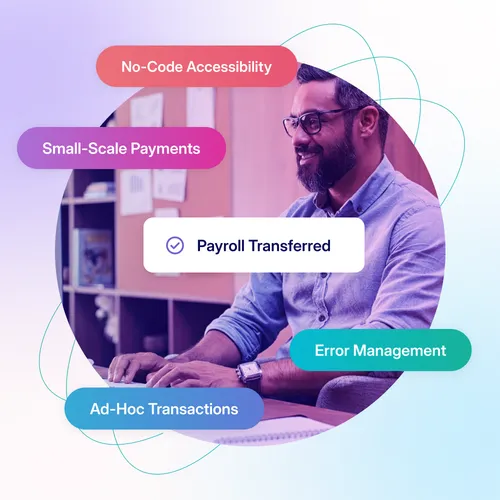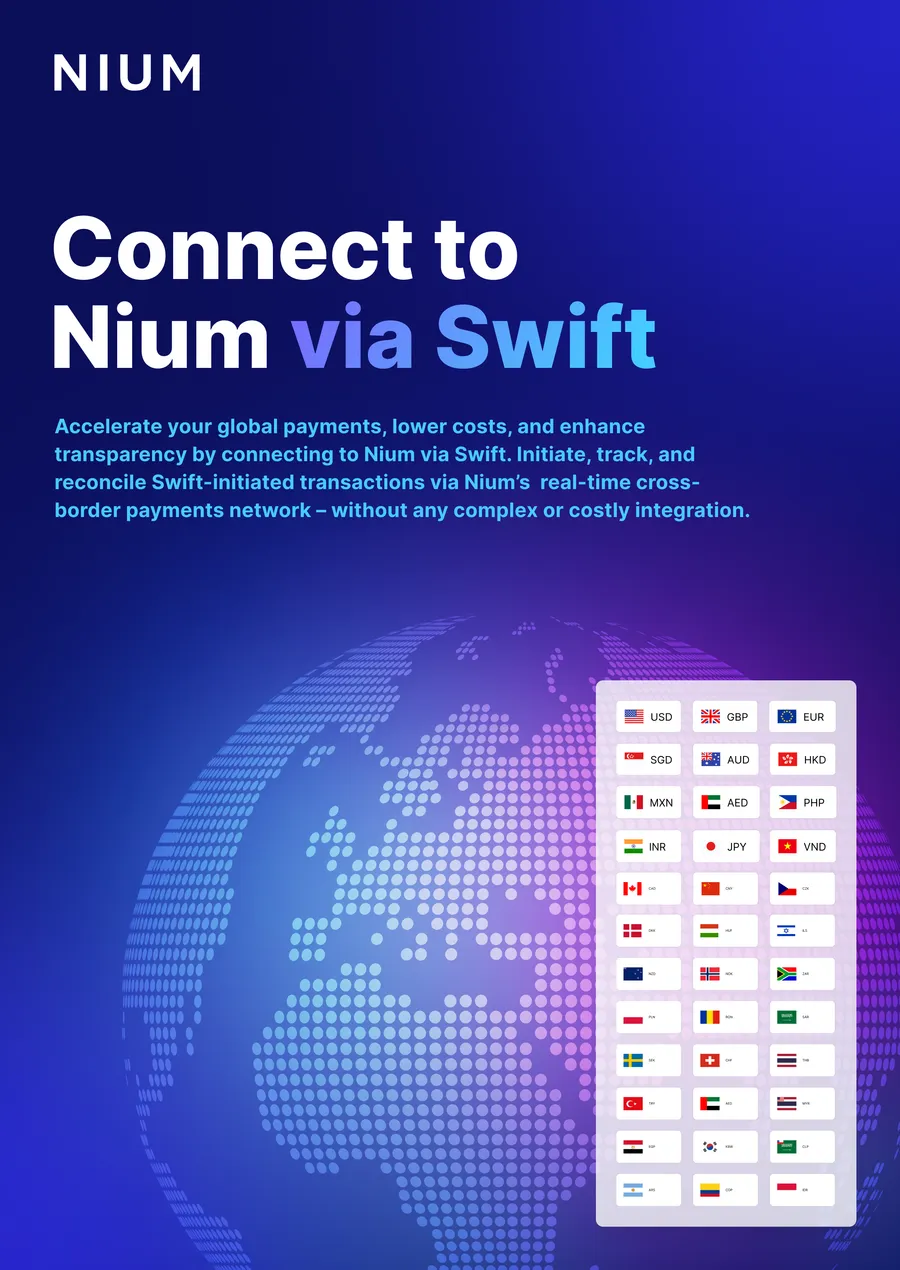Global business to business (B2B) cross-border payment transaction values are predicted to exceed $150 trillion by the end of 2022, representing a substantial chunk of the payments market. But even though they are a significant driver of worldwide economic activity, actually making global payments is frequently a complex process, fraught with challenges. In particular, payments are currently being held back by systemic barriers to cross-border payments; the inability of many companies to adapt and modernise; a recent rise in fraud cases; and the global disruption created by the Covid-19 pandemic.
Without finding ways to overcome all four of these hurdles, international businesses will struggle to unlock the full potential of B2B payments – but thankfully solutions are available.
Want to see how leaders are tackling these hurdles in practice? Meet Nium at Money20/20 USA.
Systemic barriers to cross-border payments
Making payments across national borders is often a slow and frustrating process, with financial transfers struggling to pass through various legal and regulatory hoops without delays. Regulations such as Anti-money laundering (AML) can significantly delay payments, especially as they typically rely on very time-intensive manual processes. Since delays are already a significant pain point for domestic B2B payments, with 52% in the US already suffering from some sort of delay, adding more sources of friction for international payments only increases business frustration.
The situation is also aggravated by the slow speed and heightened costs that frequently accompany currency exchanges for international payments. Poor navigation of these problems creates sluggish, unreliable payments which can have a particularly adverse impact on cashflow, as well as general business performance. Many companies that don’t have adequate cash reserves to fall back on during a period of delayed or disrupted payments are forced to resort to costly short-term financing solutions to cover the gap.
Misplaced loyalty towards legacy systems
Another substantial obstacle to global B2B payments stems from the reluctance that some companies show towards adopting innovative methods and technologies – particularly medium sized companies, which have been slower to move to updated automated systems than their larger competitors.
Typically, this stems from leadership hesitation over implementing big transformational projects, since this kind of transformation can require a big investment of time, money, and other resources. leaders worry that, by the time the old system has been replaced, the goal posts for what counts as a successful transformation will have shifted ahead, leaving them once again working with an obsolete system. The financial cost of implementing and maintaining transformation can also be daunting, and so it’s unsurprising that cheaper and familiar processes can look more appealing in comparison. Some businesses are also reluctant to change because their risk and compliance teams are wary of the problems that they fear could result from dropping their familiar manual systems.
As a result, many companies are still reliant on manual processes when making B2B payments, generating many manual interventions that both increase the risk of human error and slow down the payment process.
The challenges created by payments fraud (and the dangers of over-correction)
Frauds have seen a year-on-year rise since 2014, with 81% of businesses reporting that they were targeted by an attempted B2B fraud in 2020. Typically this type of assault involves some form of hacking or social engineering (such as phishing or compromised email attack) to redirect payments to an illicit recipient.
Fraud represents a particular challenge for payments because attempts to fight it often involve creating additional processes, that then exacerbate other pre-existing problems by increasing payment costs and delays. Concern about this kind of outcome then in turn feeds into reluctance by business leaders to adopt proper countermeasures, leaving their businesses vulnerable to attack.
Pandemic-induced global disruption has exacerbated existing problems.
The ongoing Covid-19 pandemic has inflicted massive disruption on virtually all economic sectors, causing a 3.65% decrease in global GDP. This was reflected in vastly reduced worldwide trade, which slumped over 30%, and this decline massively reduced the demand for international B2B payments. The stall also underlined the degree to which reliance on traditional manual processes, which were more open to disruption than more advanced digital methods, left payments vulnerable to disruption and delay. This pushed many businesses to fully adopt digital payments, with a survey indicating that 60% of businesses see this as the most significant recent development in the B2B space. However, businesses that failed to modernize their payment processes will find it difficult maximise efficiency, and will remain vulnerable to delays and disruption.
***
The response to the pandemic indicates that, while these four hurdles all pose a substantial payments hurdle for businesses that rely on traditional systems, companies that have sought out the right payment tools are well-placed to thrive.
Payment platforms that can offer simple and seamless payments channeled along a comprehensive network of payment corridors can consistently deliver fast, reliable payments to a wide range of global destinations, minimising the problems that inhibit cross-border payments. Likewise, automated identity-verification and anti-fraud systems can provide effective security for real-time payments without producing the delays and disruption that mar traditional responses.








.png@webp)






